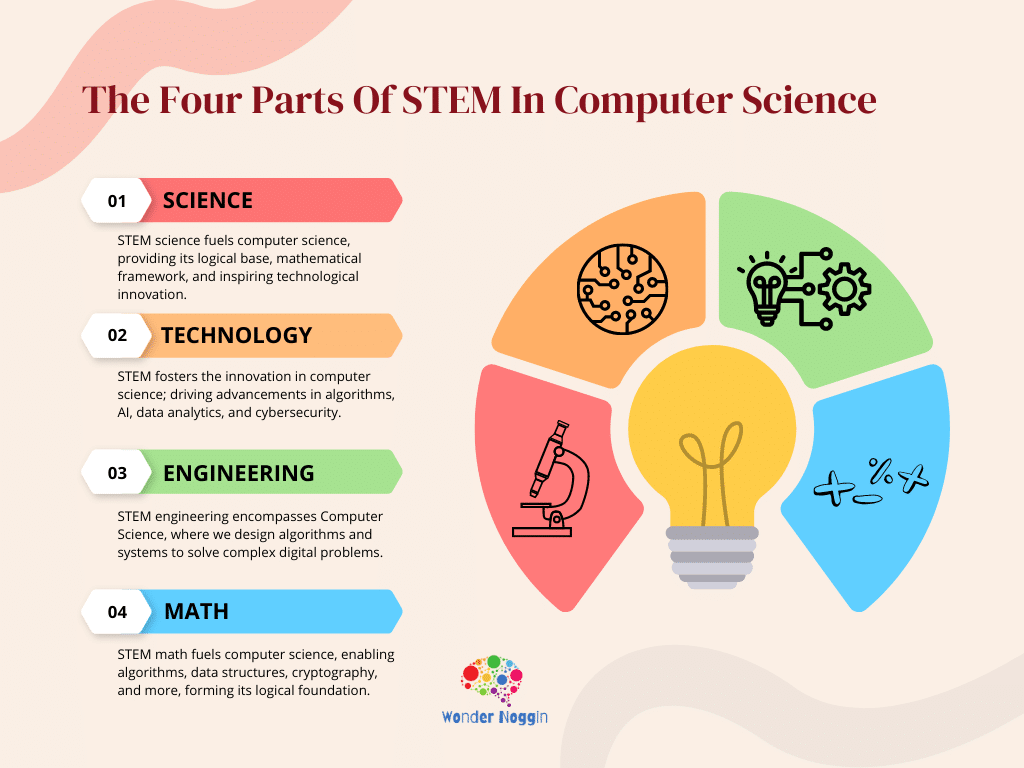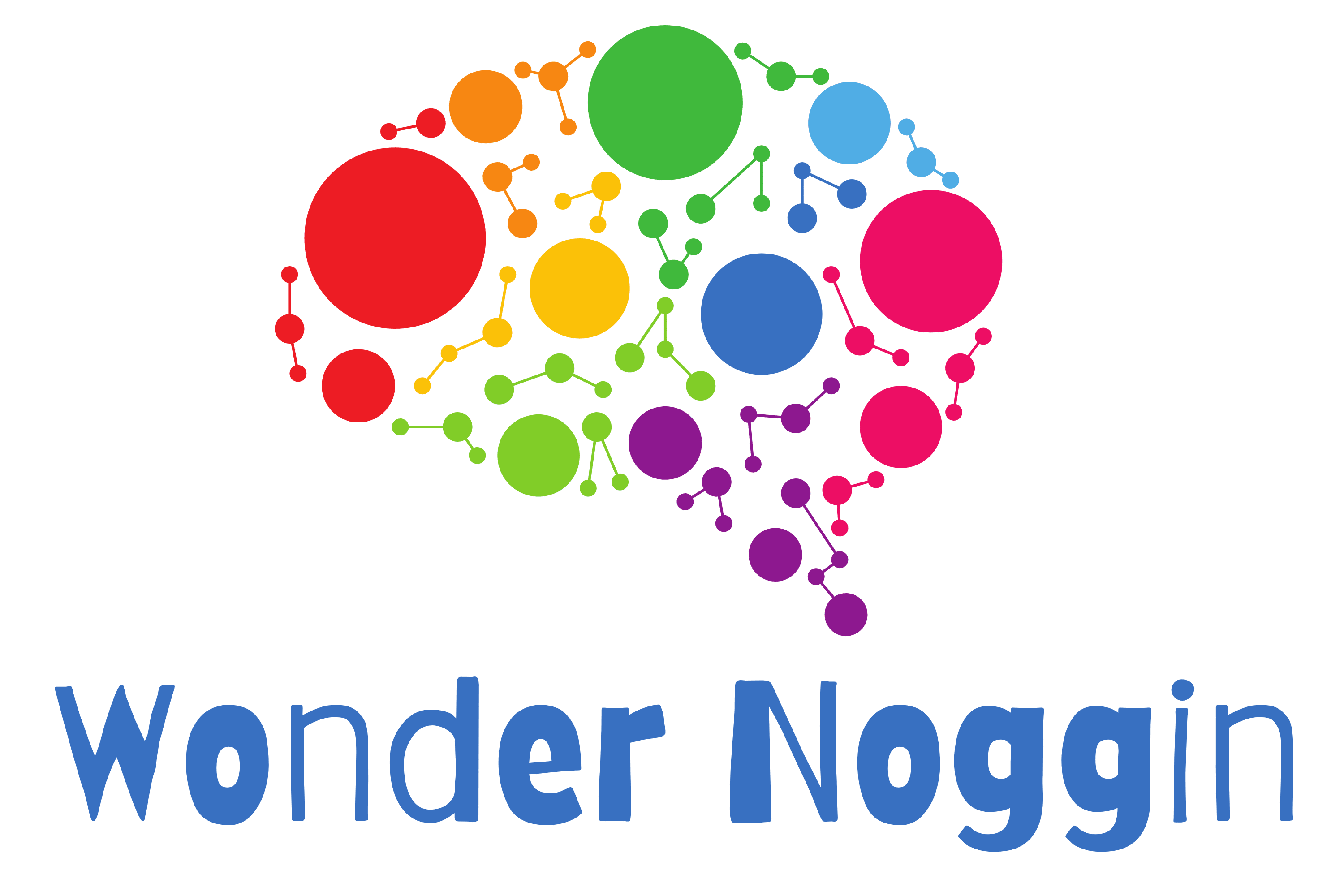As a parent, you’re always looking for ways to give your children a competitive edge in today’s tech-driven world. You’ve probably heard the buzz around STEM education, but where does computer science fit in? It’s a question many parents grapple with as they navigate their kids’ academic journey.
Computer science isn’t just about coding; it’s a gateway to problem-solving, critical thinking, and innovation.
But is it truly part of the STEM framework?
Understanding this can help you make informed decisions about your child’s education and future career prospects. Let’s dive into the world of computer science and STEM to uncover how they intersect and why it matters for your child’s success.
Is Computer Science STEM? Understanding its Role as a Component
Computer science integrates seamlessly into STEM education, encompassing elements from each discipline. It’s a multifaceted field that draws upon and contributes to science, technology, engineering, and mathematics.
Computer science is one of the many STEM degrees, which are academic programs centered around science, technology, engineering, and mathematics.

Don’t believe me? Well, here are some says computer science uses each of the aspects of STEM (which shows that computer science is part of STEM):
What is STEM?
STEM stands for Science, Technology, Engineering, and Mathematics. It is an educational approach that focuses on integrating these four disciplines to develop essential 21st-century skills.
STEM education aims to prepare students for a digital future by equipping them with the knowledge and abilities needed to navigate and understand the rapidly changing world around them.
The US Department of Education emphasizes the importance of building students’ skills, content knowledge, and literacy in STEM fields. By fostering critical thinking, problem-solving abilities, and innovation, STEM education lays the groundwork for future success in a technology-driven society.
The Field of Computer Science
Computer science is a diverse and dynamic discipline that encompasses the study of computer systems, programming, and the innovative use of technology to solve real-world problems.
As a vital component of STEM education, computer science equips students with essential skills such as problem-solving, computational thinking, and decision-making.
Computer scientists leverage these skills to drive technological advancements and create impactful solutions across various industries.
The field of computer science is constantly evolving, requiring continuous innovation and adaptation to keep pace with emerging technologies and new challenges.
The Science Aspect
Computer science embodies scientific principles through its systematic approach to problem-solving. It involves formulating hypotheses, conducting experiments, and analyzing results—all core scientific practices. Computer scientists use the scientific method to develop algorithms, test software, and optimize systems.
The Technology Aspect
At its core, computer science drives technological advancements. It’s the foundation for creating new technologies, from software applications to artificial intelligence.
Computer science enables the development of tools and systems that power our digital world, including smartphones, cloud computing, and cybersecurity solutions.
The Engineering Aspect
Computer science incorporates engineering principles in the design and construction of computer systems and software. It involves architecting complex systems, optimizing performance, and ensuring reliability.
Software engineering, a subset of computer science, applies engineering methodologies to create scalable and efficient software solutions.
The Math Aspect
Mathematics forms the backbone of computer science. Algorithms, data structures, and computational theory all rely heavily on mathematical concepts.
Computer scientists use discrete mathematics, linear algebra, and statistics to solve complex problems and develop efficient computational methods.
Core Concepts of Computer Science
Computer science encompasses a range of core concepts that form the foundation of this discipline. These concepts are essential for understanding how computers work and how to solve complex problems using computational methods. Computer science courses typically cover these fundamental concepts, including data structures, which are crucial for optimizing data storage and retrieval.
Algorithms:
-
Step-by-step procedures for solving problems
-
Fundamental building blocks of computer programs
-
Examples: sorting algorithms, search algorithms, optimization algorithms
Data Structures:
-
Organize and store data efficiently
-
Enable fast access and manipulation of information
-
Common structures: arrays, linked lists, trees, graphs, hash table
Programming Languages:
-
Tools for communicating instructions to computers
-
Range from low-level (assembly) to high-level (Python, Java)
-
Each language has unique syntax and features
Computer Architecture:
-
Design and organization of computer hardware
-
Components: CPU, memory, storage, input/output devices
-
Understanding how hardware interacts with software
Operating Systems:
-
Manage computer resources and provide user interface
-
Examples: Windows, macOS, Linux, Android, iOS
-
Handle tasks like memory management, file systems, process scheduling
Networking:
-
Principles of connecting computers and devices
-
Protocols for data transmission and communication
-
Concepts: IP addressing, routing, network topologies
Databases:
-
Structured storage and retrieval of data
-
Relational and non-relational database models
-
Query languages for accessing and manipulating data
Software Engineering:
-
Methodologies for designing, developing, and maintaining software
-
Concepts: version control, testing, debugging, documentation
-
Agile, waterfall, and other development approaches
Artificial Intelligence:
-
Creating intelligent machines that can perform tasks requiring human-like intelligence
-
Machine learning, neural networks, natural language processing
-
Applications in robotics, computer vision, and decision-making systems
Cybersecurity:
-
Protecting computer systems, networks, and data from threats
-
Encryption, authentication, and secure communication protocols
-
Ethical hacking and vulnerability assessment techniques
These fundamental concepts in computer science provide a solid foundation for understanding and advancing in the field.
They’re interconnected and build upon each other, allowing you to develop complex systems and solve real-world problems using computational approaches.
View this post on Instagram
The Role of STEM in Advancing Computer Science Education
STEM disciplines play a crucial role in the advancement of computer science. Each component of STEM contributes uniquely to the growth and development of computer science, creating a synergistic relationship that drives innovation and technological progress.
While computer science focuses on algorithms and software, computer engineering emphasizes hardware architecture and the integration of hardware and software.
Science: Impact of Methodologies on Computer Science
Scientific methodologies form the backbone of computer science research and development. The scientific method, with its emphasis on hypothesis testing, experimentation, and data analysis, guides the creation and validation of new algorithms and computational models.
A computer science major often involves rigorous training in scientific methodologies, preparing students for research and development roles. Computer scientists apply these methodologies to:
-
Develop and test new programming languages
-
Evaluate the efficiency of algorithms
-
Conduct empirical studies on user behavior and human-computer interaction
-
Validate the effectiveness of machine learning models
Technology: Integration with Computer Science
Technology and computer science are inextricably linked, with each driving the advancement of the other.
Computer science provides the theoretical foundation for new technologies, while technological advancements enable more complex computational processes.
A computer science major provides a strong foundation in both theoretical and practical aspects of technology, enabling students to drive technological advancements. This integration is evident in:
-
The development of faster, more powerful hardware
-
Creation of sophisticated software systems
-
Advancements in artificial intelligence and machine learning
-
Implementation of cloud computing and distributed systems
Engineering: Design and Problem-Solving Approaches
Engineering principles are fundamental to computer science, particularly in the design and implementation of complex systems.
A computer science major includes courses in software engineering, where students learn to apply engineering principles to develop scalable and efficient software solutions.
Computer scientists apply engineering approaches to:
-
Architect large-scale software systems
-
Design efficient algorithms and data structures
-
Optimize computer networks and communication protocols
-
Develop robust and scalable database systems
These engineering practices ensure that computer science solutions are not only theoretically sound but also practical and efficient in real-world applications.
Mathematics: The Core of Computing Theories and Discrete Mathematics
Mathematics provides the theoretical foundation for many aspects of computer science. Mathematical concepts and techniques are essential for:
-
Developing and analyzing algorithms
-
Creating encryption methods for cybersecurity
-
Modeling complex systems and simulations
-
Implementing machine learning and data analysis techniques
A computer science major often includes rigorous coursework in mathematics, such as discrete mathematics and linear algebra, which are essential for developing efficient algorithms.
Linear algebra, discrete mathematics, and calculus are particularly crucial in areas such as computer graphics, artificial intelligence, and optimization algorithms.
Computer scientists can create more efficient and powerful computational tools and theories by leveraging mathematical principles.
Career Paths for Computer Science Majors
Computer science majors have a plethora of career options available to them, spanning multiple industries. Some common career paths include:
-
Software Engineering: Software engineers work as part of a team to create, test, debug, modify, and maintain software programs. They apply engineering principles to develop scalable and efficient software solutions.
-
Web Development: Web developers design and create the visual and functional aspects of websites, ensuring a seamless user experience.
-
Mobile Application Development: Mobile app developers design, build, and maintain applications for mobile devices, catering to the growing demand for mobile technology.
-
Cybersecurity: Cybersecurity analysts are responsible for protecting an organization’s information network from threats, ensuring data integrity and security.
-
Database Administration: Database administrators manage and maintain the systems that store and organize a company’s important information, ensuring data is accessible and secure.
These career paths highlight the versatility and demand for computer science majors in today’s job market.
The Reasons Computer Science Major is Classified as STEM
Computer science’s classification as a STEM discipline stems from its integral role in advancing scientific, technological, engineering, and mathematical fields. Here are the key reasons for its inclusion:
Scientific methodology:
-
Employs hypothesis testing and empirical observation
-
Develops and validates computational models
-
Applies systematic problem-solving approaches
Technological innovation:
-
Drives advancements in hardware and software
-
Creates new tools for data analysis and visualization
-
Enables breakthroughs in artificial intelligence and machine learning
Engineering principles:
-
Designs and implements complex systems
-
Optimizes algorithms for efficiency and performance
-
Applies software engineering methodologies
Mathematical foundations:
-
Utilizes discrete mathematics and logic
-
Implements statistical analysis and probability theory
-
Applies numerical methods and computational theory
Interdisciplinary applications:
-
Enhances research capabilities in other STEM fields
-
Provides computational tools for scientific simulations
-
Enables data-driven decision-making across disciplines
Problem-solving skills:
-
Develops critical thinking and analytical abilities
-
Encourages creative solutions to complex challenges
-
Fosters logical reasoning and algorithmic thinking
Technological literacy:
-
Prepares students for a digital-centric workforce
-
Cultivates understanding of emerging technologies
-
Promotes adaptability in rapidly evolving tech landscapes
Innovation catalyst:
-
Sparks new ideas and inventions
-
Facilitates cross-disciplinary collaboration
-
Drives economic growth through technological advancements
Quantitative reasoning:
-
Strengthens mathematical and logical thinking
-
Develops skills in data analysis and interpretation
-
Enhances ability to work with abstract concepts
Computational thinking:
-
Promotes structured approach to problem decomposition
-
Develops pattern recognition and abstraction skills
-
Encourages algorithmic design and efficiency optimization
While both computer science and computer engineering are part of STEM, they focus on different aspects of computing. Computer science emphasizes software and algorithms, whereas computer engineering focuses on hardware and system integration.
Computer science’s classification as STEM reflects its pivotal role in advancing scientific knowledge, driving technological progress, applying engineering principles, and utilizing mathematical concepts. This integration underscores its significance in shaping the future of innovation and problem-solving across various domains.
The Impact of Computer Science on Society
Computer science has a profound and growing impact on society, driving 60% of new jobs in STEM fields. Computer science occupations are among the highest in demand, with the lowest unemployment rates across all sectors.
The influence of computer science extends to every industry, creating a significant need for skilled computer scientists to fill open positions. Basic computer science education is foundational for all students, providing essential skills such as understanding how technology and the Internet work, and solving problems through computational thinking.
As Steve Jobs famously stated, computer science is a liberal art, yet many schools still do not offer even a single course in this critical field.
Embracing computer science education is crucial for preparing students to navigate and succeed in our increasingly digital world.
Final Thoughts On Computer Science In STEM
As we have seen in this post, the connection between computer science and STEM is undeniable. Computer science encompasses various disciplines within STEM, such as mathematics, technology, engineering, and science.
It introduces kids to core concepts like coding and robotics, helping them develop problem-solving skills and logical thinking.
As technology continues to advance and become an integral part of our lives, the importance of computer science in STEM is only expected to grow. It opens up a world of opportunities for innovation and career development.
So, whether you’re a student considering a future in STEM or a parent wanting to provide your child with the best education, embracing computer science is a wise choice. Start exploring this fascinating field today and unlock a world of possibilities.







0 Comments